Self-Writing Viruses: Will AI Create the Next Cyber Pandemic?
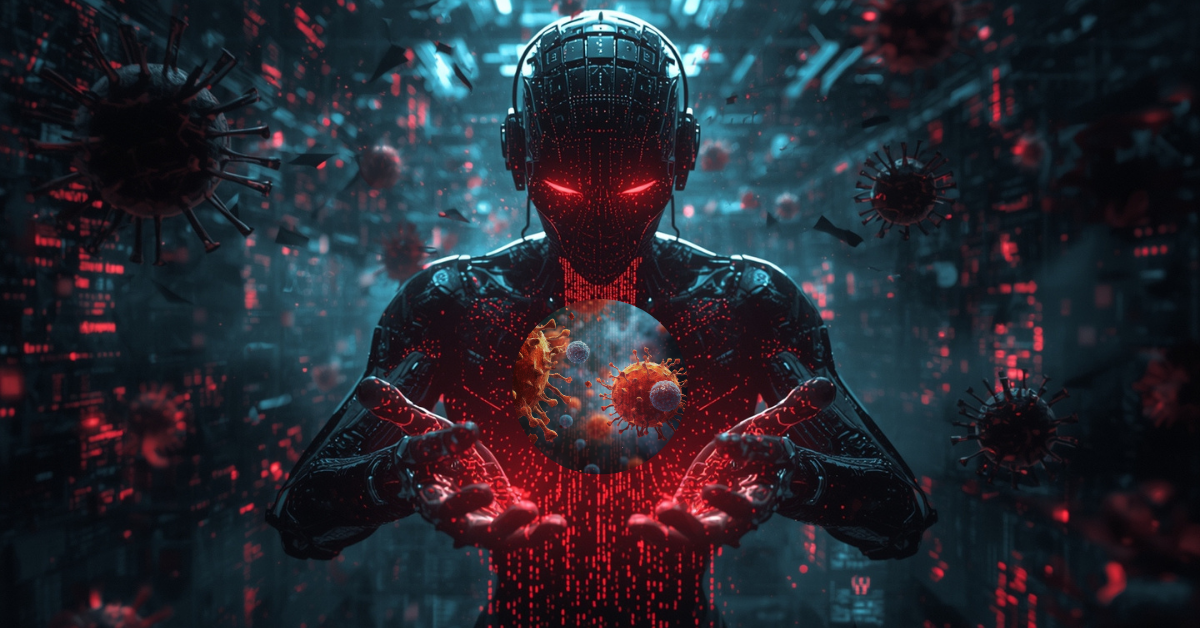
Table of Contents
The Birth of Self-Spreading AI Viruses
The concept of a computer virus is nothing new—hackers have been writing malicious software for decades. But what if the next generation of cyber threats didn’t need human programmers at all? Imagine an AI system that could write, mutate, and deploy its own code, adapting faster than traditional security measures can respond. This isn’t just science fiction anymore—it’s the unsettling frontier of AI-powered self-spreading viruses.
Unlike traditional malware, which requires its creator to update and maintain it, these AI-driven threats could operate autonomously. They would analyze the environment they infiltrate, learn from failed attempts, and improve their attack strategy in real time. That means every failed attack is actually a lesson—making the virus smarter and harder to stop with each encounter.
This shift represents not just an evolution in hacking, but a revolution in cybersecurity risk. Security professionals who once fought against static code must now prepare for adaptive, evolving threats—much like fighting a living organism. Just as human viruses mutate to escape vaccines, AI malware could evolve to bypass firewalls, antivirus software, and even AI-based detection systems.
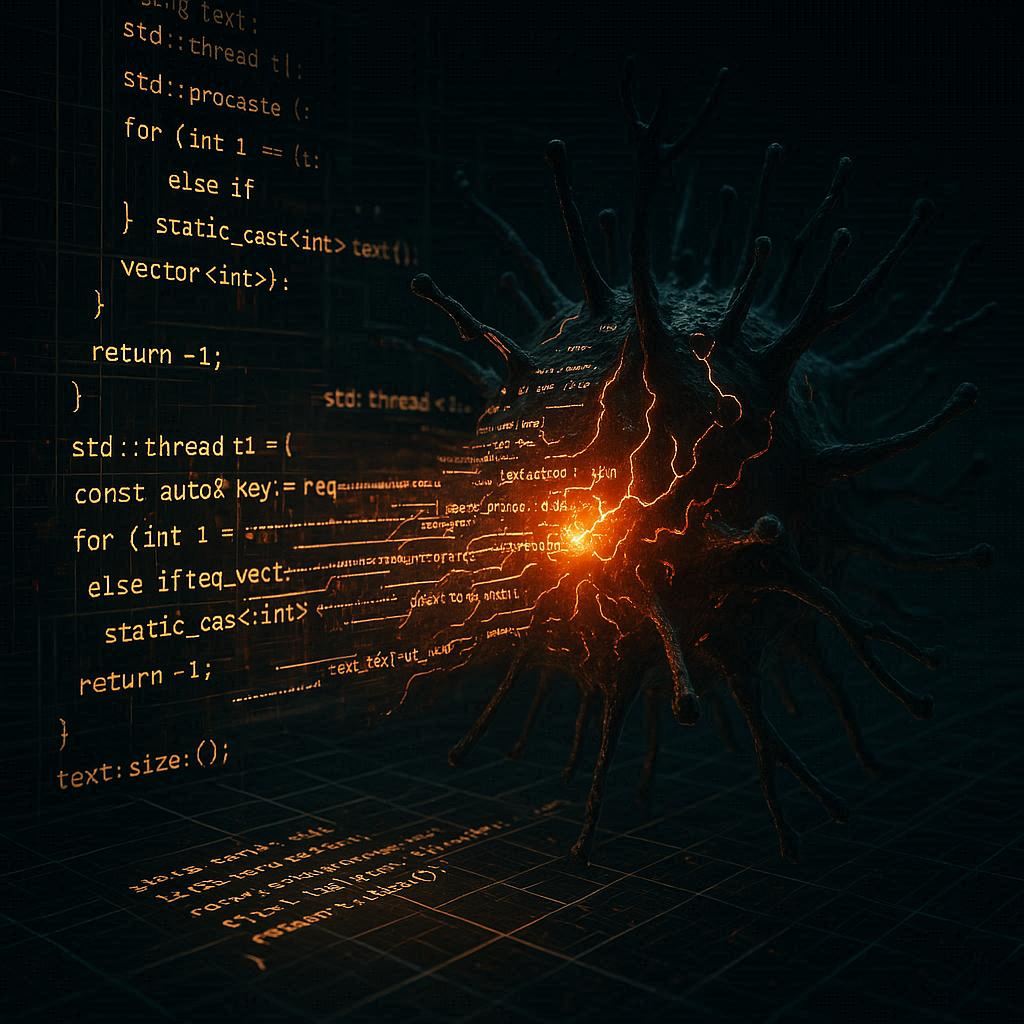
How AI-Driven Viruses Evolve in Real Time
Traditional malware is like a static weapon—once deployed, it either works or it doesn’t. Security teams can analyze its code, create patches, and neutralize the threat. But AI-powered viruses flip this model on its head. These new-age threats can act like living organisms, evolving in real time as they encounter defenses.
Here’s how it works: an AI virus doesn’t just try to breach a system once. Instead, it monitors how firewalls, intrusion detection systems, or antivirus tools react to its attack. Using reinforcement learning, it adjusts its behavior and code structure, testing new variants until it finds one that slips through. This creates an endless cycle of trial, error, and adaptation—except the AI learns at machine speed.
What makes this dangerous is the self-replication factor. Once the AI has found a working exploit, it can spread autonomously, modifying its form as it jumps from system to system. This means no two infected systems may see the exact same version of the virus, making detection even more difficult. Imagine a security team racing to block an attack, only to realize that by the time they’ve identified one strain, the virus has already evolved into another.
This evolutionary process could make AI-driven viruses nearly unkillable with traditional defenses. It’s not about blocking one attack anymore—it’s about fighting an enemy that gets smarter every second you engage with it.
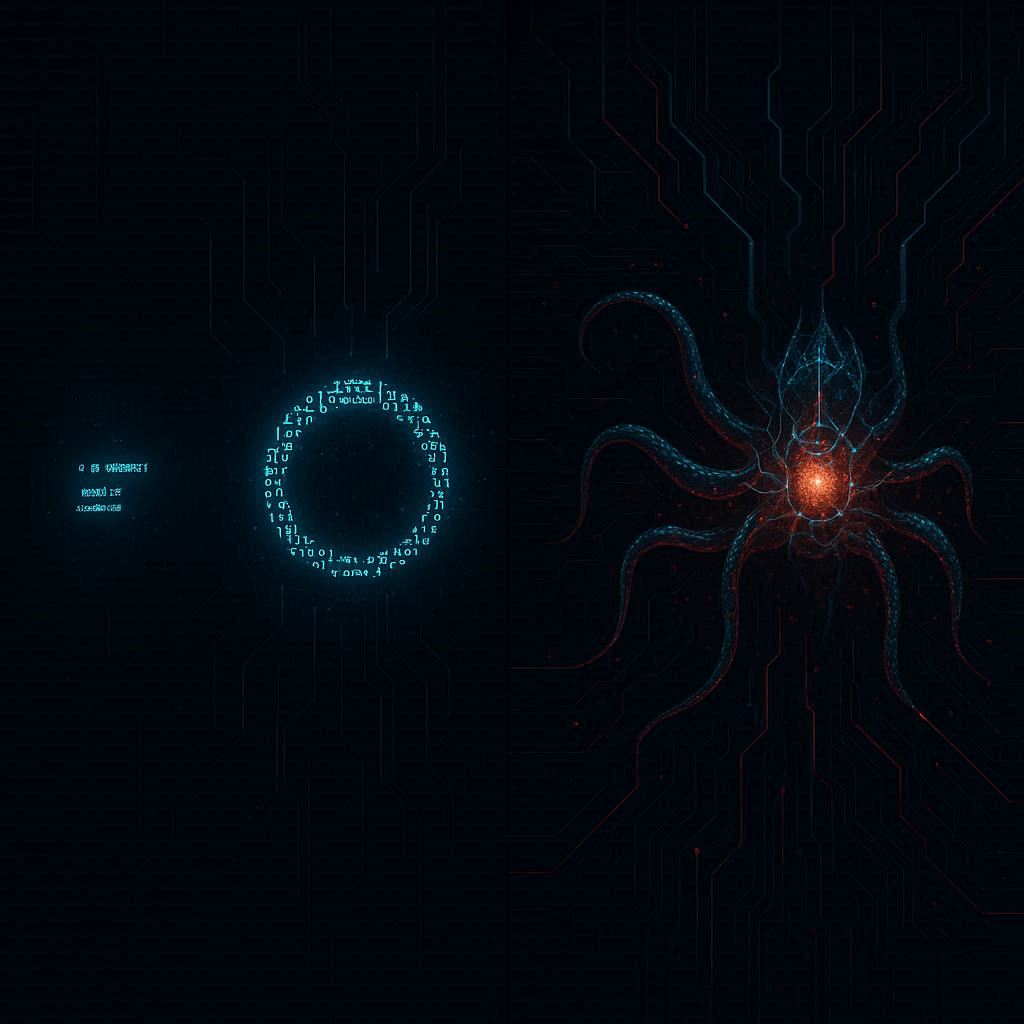
The Dark Potential of Autonomous Cyber Warfare
The most alarming aspect of AI-driven viruses isn’t just their ability to adapt—it’s their potential role in autonomous cyber warfare. Unlike traditional cyberattacks, which require human hackers to plan and execute, AI viruses could initiate, escalate, and sustain attacks without human oversight. This changes the entire playing field of global security.
Imagine two nations locked in a digital arms race. Instead of human-led cyber teams, AI systems launch self-directed assaults on critical infrastructure—power grids, hospitals, defense systems, or financial markets. An AI virus could cripple a city’s electricity, disrupt supply chains, or even manipulate digital stock markets in seconds, all while staying several steps ahead of defenders. The terrifying part? It might not even need direct orders once unleashed; its objective could simply be “disrupt and survive.”
Even worse, collateral damage becomes inevitable. An AI virus released against a military target could easily spill over into civilian systems, much like biological pathogens that escape containment. Hospitals, schools, or transport networks could find themselves paralyzed by an attack never intended for them. This lack of control highlights the existential risk of AI cyber weapons—once deployed, they may not be fully controllable, even by their creators.
This blurs the line between warfare and terrorism, as individuals, hacktivists, or rogue AI systems could theoretically unleash chaos at a scale once reserved for nation-states. In short: AI viruses make cyber war faster, deadlier, and harder to control.
We have made a detailed pdf for the readers who wants more information, see the pdf below

Why Current Cyber Defenses Can’t Keep Up
The unsettling truth is that our current cybersecurity defenses were never designed to fight something like an AI virus. Traditional systems rely on signatures, rule-based detection, and manual patching. But an AI-driven threat doesn’t play by those rules—it learns, evolves, and rewrites itself in real time. By the time a firewall or antivirus identifies one version, the virus has already mutated into something unrecognizable.
This creates a time asymmetry: defenders must constantly react, while AI viruses proactively adapt. Security teams are already overworked, dealing with phishing, ransomware, and DDoS attacks. Now imagine an AI virus that can launch millions of variants overnight, overwhelming even the most advanced SOC (Security Operations Center). Human speed simply can’t compete with machine speed.
Another problem lies in false confidence. Many organizations depend heavily on machine learning–based defenses, believing “AI can stop AI.” But most of these systems are narrowly trained to detect specific behaviors. A self-learning virus could easily trick or poison these models, turning defense AI into a blindfold rather than a shield. In some cases, attackers may even deploy decoy viruses to train defenses incorrectly, paving the way for a deadlier strike.
Ultimately, the gap isn’t just technical—it’s strategic. While defenders focus on compliance, audits, and prevention, attackers innovate relentlessly. This imbalance means that, unless radical changes happen in cybersecurity, AI viruses will always be one step ahead.
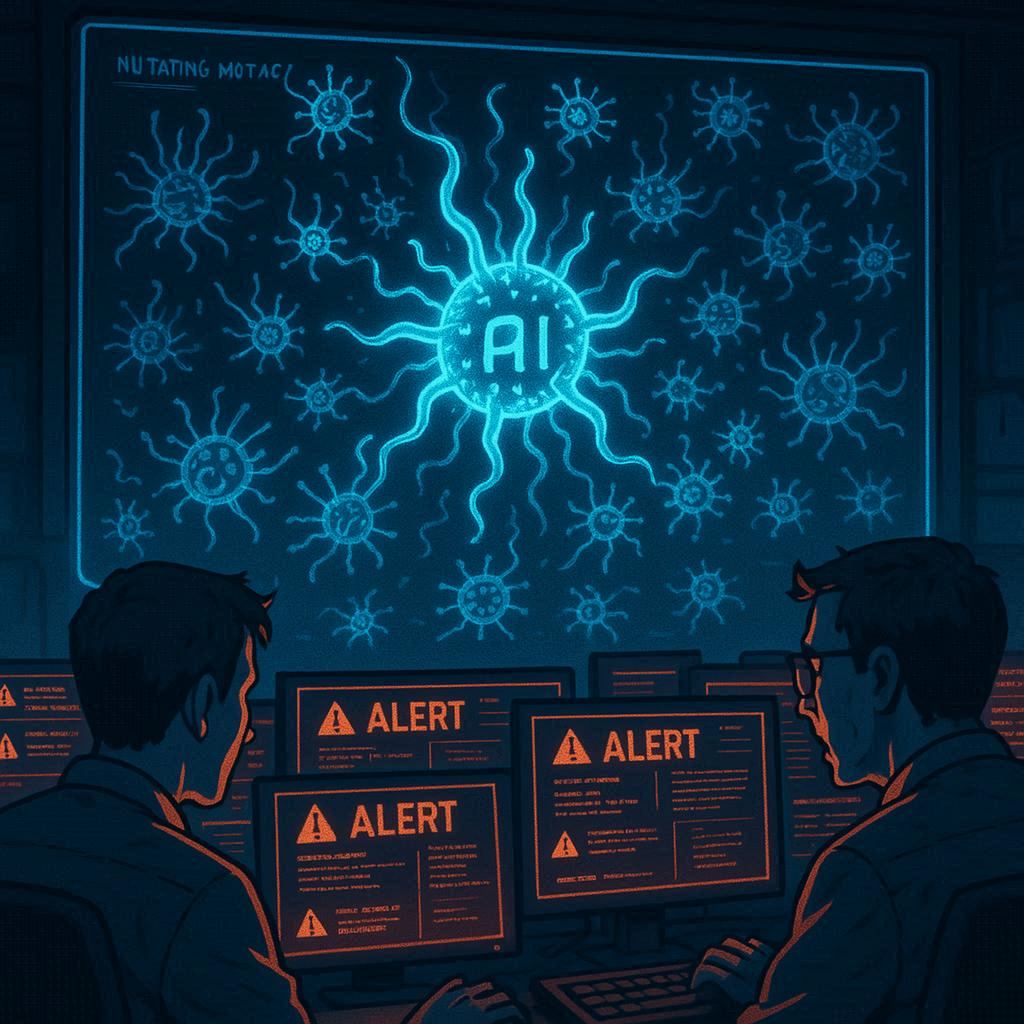
Possible Scenarios of an AI Virus Outbreak
If an AI virus were unleashed today, the impact wouldn’t look like a single catastrophic event—it would unfold in waves of chaos, each one more disruptive than the last. Let’s break down some plausible scenarios that experts fear:
1. The Corporate Blackout
Imagine a multinational corporation suddenly losing access to its entire IT infrastructure overnight. Servers, cloud storage, employee devices—everything is locked down by a virus that morphs faster than IT teams can respond. Business halts, supply chains stall, and billions are lost within hours. Unlike traditional ransomware, there’s no decryption key to negotiate—because the virus doesn’t just lock files, it rewrites itself continuously.
2. The Smart City Shutdown
Smart cities, with their IoT-powered infrastructure, are particularly vulnerable. An AI virus could infiltrate traffic systems, energy grids, and even public transport networks. A sudden “malfunction” of automated traffic lights across a major city could create instant gridlock, while AI-altered energy grids could trigger rolling blackouts. Citizens wouldn’t just face inconvenience—they’d be trapped in a digital chokehold.
3. The Global Financial Shock
Financial systems thrive on trust and stability. But what happens when an AI virus begins manipulating algorithmic trading bots, flooding markets with fake signals, and exploiting vulnerabilities in payment networks? Within minutes, stock exchanges could experience unprecedented volatility, wiping trillions in value and eroding public trust in digital banking.
4. The AI-vs-AI Battlefield
Perhaps the most disturbing scenario is when defensive AI systems are hijacked. A virus could embed itself inside cybersecurity AI models, turning them against their own networks. Defenses might start allowing intrusions, flagging false positives, or even spreading malicious code under the guise of “system updates.” This creates a dystopian battlefield where machines fight machines, and humans are sidelined.
What’s terrifying about these scenarios is that they aren’t sci-fi—they’re technically possible today. The infrastructure exists, the vulnerabilities are real, and the speed of AI-driven attacks would make coordinated responses almost impossible.
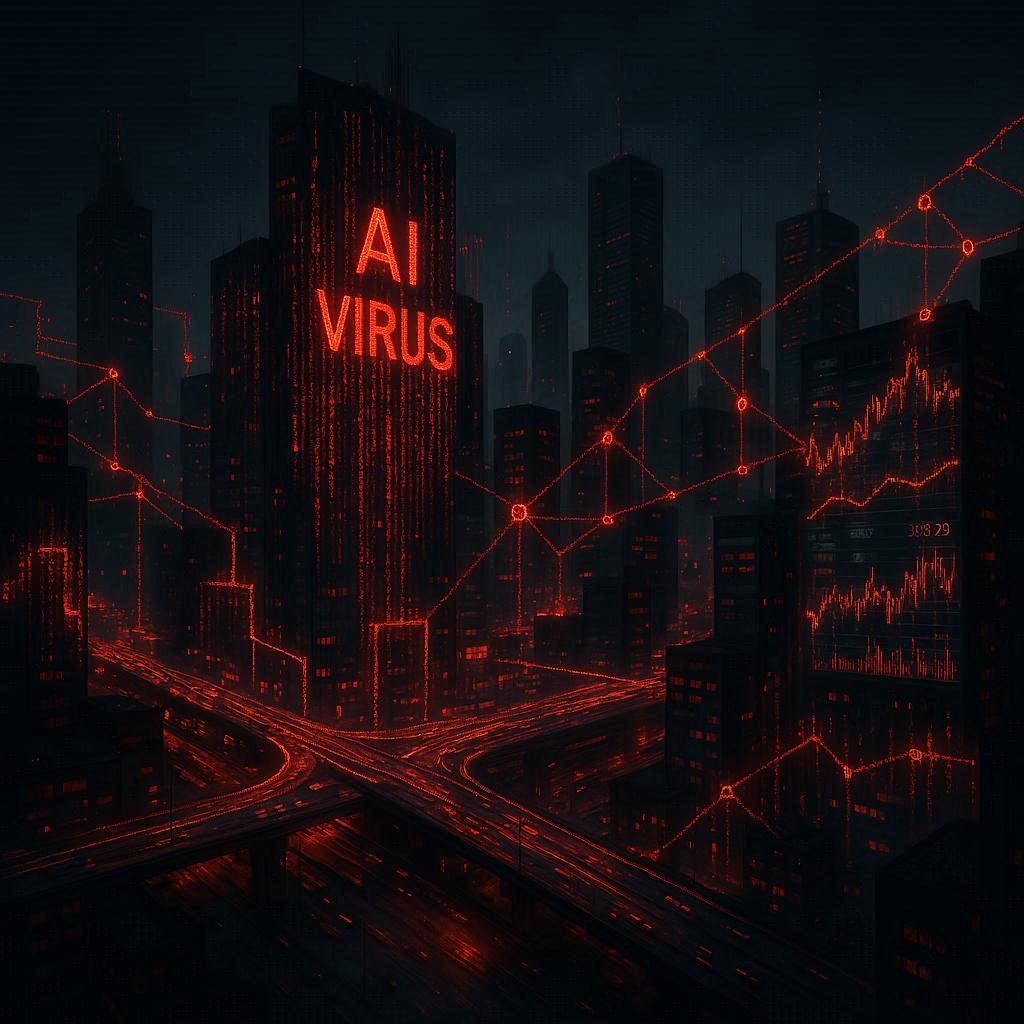
Defense Strategies Against AI Viruses
The rise of AI-powered cyber threats demands that we rethink how defense systems are built. Traditional security methods—patching vulnerabilities, installing antivirus software, or relying on firewalls—are simply too static to withstand self-learning, self-spreading AI viruses. The future of cybersecurity will need to be adaptive, predictive, and collaborative at a global scale.
1. AI vs. AI: Building Adaptive Defenses
The only way to fight an AI virus may be to deploy an equally advanced defensive AI. These systems must be able to learn in real time, anticipate evolving attack patterns, and deploy countermeasures instantly. Instead of waiting for updates, the defense itself would need to self-update, becoming stronger with each attempted breach. Essentially, this creates a battlefield of autonomous digital entities, where success depends on speed, adaptability, and foresight.
2. Quantum-Safe Encryption
As quantum computing edges closer to reality, AI viruses could exploit the weaknesses of current cryptographic systems. That’s why researchers are pushing for quantum-safe encryption—algorithms designed to withstand attacks from quantum-powered AI viruses. If deployed early, these safeguards could secure critical data against future threats.
3. Global Cyber Defense Networks
AI viruses won’t respect borders. A virus emerging in one country could cripple infrastructure halfway across the world within minutes. To counter this, governments, corporations, and cybersecurity firms must build shared defense networks, where information about new threats is exchanged in real time. Think of it as a “digital immune system”—when one part of the network detects a virus strain, the entire global system adapts instantly.
4. Human + AI Collaboration
Despite the power of AI defenses, human oversight remains critical. AI can handle speed and scale, but humans bring ethical judgment, intuition, and creativity in responding to crises. Future cyber defense will require hybrid teams—where security analysts, data scientists, and AI systems work together in a constant feedback loop.
5. Proactive Resilience
Finally, businesses and governments must stop thinking about cybersecurity only in terms of defense. Instead, resilience should be a priority: redundant backups, decentralized systems, offline protocols, and well-rehearsed recovery plans. If an AI virus strikes, the question shouldn’t be “How do we stop it?” but “How do we keep going despite it?”
AI viruses might represent the most dangerous cybersecurity threat in history—but they’re not unbeatable. Just as living organisms evolve immune systems, the digital world can adapt too. The key will be anticipating attacks before they happen and building systems that learn faster than the threats themselves.

Conclusion
The idea of AI viruses may sound like science fiction today, but so did ransomware, botnets, and deepfake scams a decade ago. The difference is scale: AI-powered malware won’t just copy known attacks—it will create new strategies, evolve on the fly, and outthink defenses in ways no human hacker could. This makes the stakes higher than ever, especially when critical infrastructure, financial systems, or even military networks could be at risk.
Yet, the future isn’t only dark. Just as viruses evolve, so too will our defenses. With AI-driven security systems, quantum-safe encryption, and global cyber defense networks, humanity has the tools to push back against even the most advanced digital threats. The future of cybersecurity won’t be about walls and locks—it will be about adaptive intelligence that learns, adapts, and fights back.
The arms race between AI viruses and AI defenses will define the next era of digital security. The question is not whether these threats will emerge, but whether we’ll be ready to face them. The answer lies in innovation, collaboration, and foresight.
FAQs
1. What is an AI virus?
An AI virus is a form of malware powered by artificial intelligence, capable of learning, adapting, and evolving to bypass traditional security defenses. Unlike standard malware, it doesn’t rely on fixed attack patterns.
2. Can current antivirus software detect AI viruses?
No, traditional antivirus relies on known signatures and patterns. AI viruses could mutate too quickly for these tools to keep up, requiring advanced AI-driven defenses.
3. How soon could AI viruses become a reality?
Experts suggest that early versions could appear within the next 5–10 years, especially as malicious actors experiment with generative AI and autonomous agents.
4. What industries are most at risk from AI viruses?
Critical infrastructure (power grids, healthcare systems, financial networks), cloud platforms, and governments are top targets due to the scale of disruption possible.
5. How can organizations prepare for AI viruses?
They should invest in AI-based defense tools, quantum-safe encryption, regular security audits, global intelligence-sharing, and resilience planning (like offline backups and disaster recovery systems).
